|
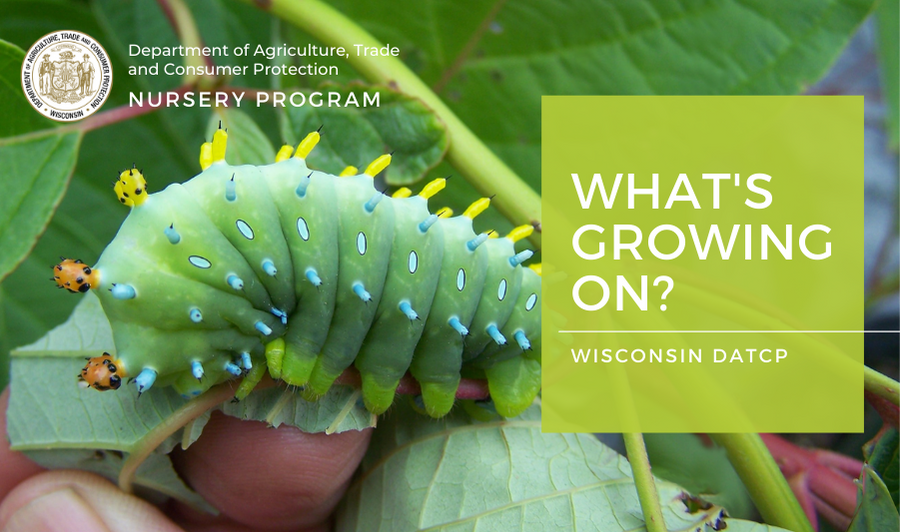 _____________________________________
Dear Wisconsin nurseries, Christmas tree growers, and gardeners:
There are only a few days remaining to renew your nursery license without paying a late fee, so don't delay!
Please send any feedback, questions, or ideas for future e-news updates to datcpnursery@wisconsin.gov.
Having trouble viewing this email? View it as a Web page.
_____________________________________
|
|
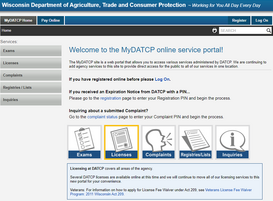
Nursery and Christmas tree licenses for this growing season (LY2024) will expire on February 20, 2024. Paper expiration notices to renew your license for the next growing season (LY2025) were mailed in late November. Expiration notices were emailed out on December 4, 2023. Please contact us if you need it resent.
License renewals can be completed online using the MyDATCP portal. If you have never used the online license portal, a PIN will be located on your expiration notice so you can register for a MyDATCP account. If you need assistance getting into your account, contact datcpnursery@wisconsin.gov or (608) 224-4574.
If you are no longer in business, please contact us so we can close your license(s). This avoids any enforcement actions, which may occur for entities who fail to contact us or renew by the February 20, 2024 deadline.
Tips and Reminders:
- Allow pop-ups from MyDATCP.
- Only one tab of MyDATCP can be open at a time.
- If you have multiple license types, they each need to be renewed individually. However, you can pay for them all at once by accessing your invoices from the "My Invoices" tab of MyDATCP.
- Watch the short video tutorial to walk you through the online renewal process.
- Renew your nursery license before Feb. 20 to avoid the 20% late fee.
For more information, email DATCPnursery@wi.gov, call (608) 224-4574, or visit the Nursery and Christmas tree licensing webpage.
|
_____________________________________
|
|
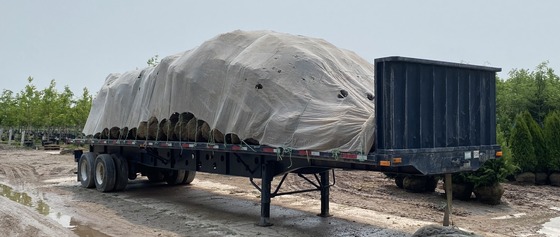 Nursery stock loaded on a trailer ready to be transported | DATCP image
A compliance agreement (CA) is a written agreement between a person engaged in growing, handling, or moving regulated articles (plants and plant parts) and a governmental agency to facilitate the movement of such articles. Compliance agreements outline what requirements must be met dependent on the origin of the articles and the destination. Federally regulated plant pests and diseases require a compliance agreement with USDA-APHIS. All other agreements are with DATCP.
Compliance agreements are valid for one year and must be renewed annually as needed. There is no fee to enter into a compliance agreement. Compliance agreements are generally pest-specific, so depending on what plant species you move, you may need multiple agreements.
See the list of Compliance Agreements available to Wisconsin plant product producers or importers webpage to identify what compliance agreements your operation may need and who to contact to enter into each agreement.
_____________________________________
|
|
|
Did you know there is a national effort each spring to raise awareness about invasive species and what can be done about them? It’s known as National Invasive Species Awareness Week (NISAW), and it is being celebrated from February 26 to March 1 in 2024!
DATCP’s Plant Industry Bureau works to prevent, survey for, manage, and eradicate harmful invasive pests and diseases. Many of these invasives are introduced into Wisconsin from other states and go on to negatively impact our natural resources, communities, and businesses. Two key principles of preventing the establishment of new pests and diseases are early detection and rapid response. After all, you never know when movement of plant material will bring the next invasive pest to your neighborhood, which is why it’s important for Wisconsinites to watch for and report these pests as soon as they are seen.
This year, we encourage you to learn about and be on the lookout for the emerging invasive pest spotted lanternfly (SLF), a type of planthopper native to China and not yet known to be in Wisconsin. SLF was first found in Pennsylvania in 2014 and has since spread to at least 17 states, including Illinois and Michigan, thanks to it being an avid hitchhiker in all its life stages. SLF weakens plants by sucking large volumes of sap from trees and vines, including tree-of-heaven, grapevines, hops, and apple. Feeding causes the insect to excrete honeydew, which causes black sooty mold to form. Once SLF is found in Wisconsin, DATCP plans to assess the extent of the infestation and provide producers and the public with management options to reduce the pest’s impacts and limit its spread in the state.
SLF life stages: Nymph stages (top left) | USDA-ARS Stephen Ausmus, adult with folded wings (top right), adult with outstretched wings (bottom) | Lawrence Barringer, PA Dept. of Ag.
SLF adults are recognizable when their wings are outstretched showing their beige and black-spotted front wings and red, black, and white back wings. Nymphs also have distinctive features, from their black, or red and black, bodies with white spots. Adults lay one to two-inch-long egg masses in fall on host plants, as well as just about any outdoor surface. These masses start out with a gray and waxy appearance, then become hardened and cracked as the season goes on. After hatching, individual eggs are noticeable, appearing as four to seven rows of dark brown “seeds.”
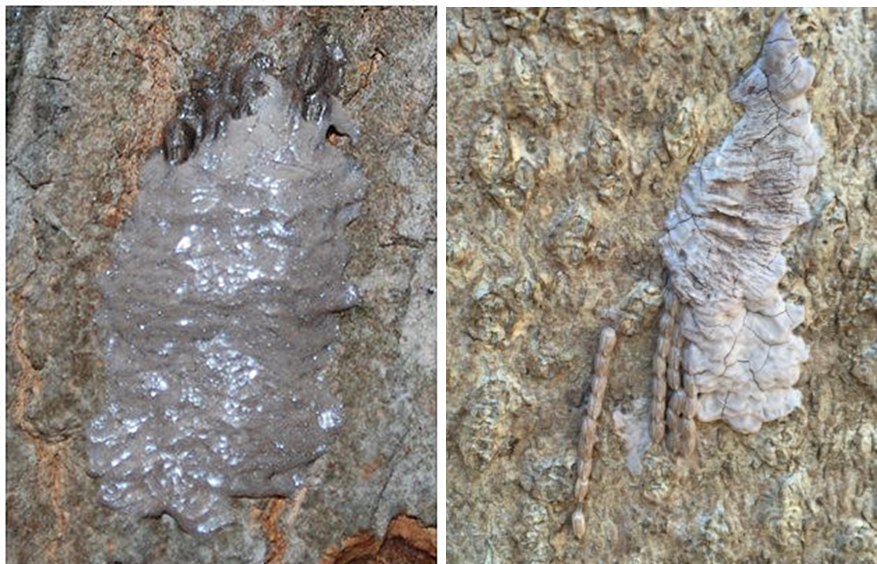 SLF egg mass in fall (left) | NJ Dept. of Ag., Older SLF egg mass in spring with some individual eggs showing (right) | Emelie Swackhamer, Penn State Extension
We encourage you to inspect plant material for SLF nymphs or adults during the growing season, especially on their preferred hosts, tree-of-heaven and grapevines. We also encourage you to check for SLF egg masses throughout winter and spring. Given that tree-of-heaven is an invasive species itself, removing it can proactively protect your community from SLF while also improving local habitats.
To learn more about pests and diseases we regulate for in Wisconsin, visit plantpests.wi.gov. Visit https://www.nisaw.org to learn more about invasive species nationally and how you can advocate for their management. To report a pest or disease that is not known to be present in Wisconsin, or to report one that has spread to a new area within the state, call the Pest Hotline at (866) 440-7523 or email a photo and your location to datcppesthotline@wi.gov.
_____________________________________
|
|
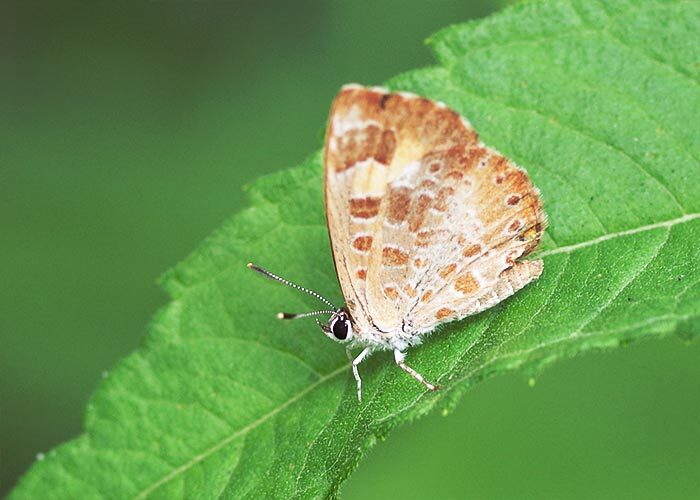 Harvester Butterfly (Feniseca Tarquinius) | Image from UW-Milwaukee
This is the fourth in a series of articles to focus on the natural predators of many of the common pest species found in Wisconsin nurseries and Christmas tree fields.
There are many butterfly and moth species in Wisconsin, with a number regarded for their beauty and status as pollinators. Regardless, these insects usually act as herbivores, with the young larva feeding on the leaves and stems of plants. Some, like spongy moth, are invasive plant pests, causing significant damage in the landscape.
The Harvester Butterfly (Feniseca Tarquinius) is unique in North America for bucking that trend through the eating habits of its larva. Instead of feeding on plant tissue, it is a potent predator of plant pests, specifically woolly aphids. Native to most of the eastern united states, this butterfly makes its home among the host plants of its favorite food. In Wisconsin, this usually means they can be found in wooded streams where alder and beech trees are plentiful. Instead of visiting flowers like most butterflies, adults feed on the honeydew produced by woolly aphids, such as the Beech blight aphid. They will then lay their eggs among these same aphids. When the larvae hatch, they will then use their prsharp mouthparts to start predating the aphids around them. Adults are dusky orange with black boarders on the wing interior, and small white bordered spots on the exterior. Larvae are small orange, white, and black caterpillars covered in fine bristles. They may also be found with the waxy remains of their prey species stuck to their bodies. It is thought that this provides them with additional protection from predators and the ants that are often found tending to woolly aphids.
Because these butterflies depend wholly on their aphid hosts for food, they tend to be only locally abundant. Therefore, they are not likely going to be significant contributors to pest control in a nursery setting. Regardless, they are still potent natural predators, filling a unique ecological niche in the landscape.
_____________________________________
|
|
|
What’s that? Pest management in Christmas tree production. Michigan State University Extension 2024 Christmas tree webinar series on pest management.
Three of four sessions remaining: February 15, 22 & 29, 2024, 11:30 a.m. - 1 p.m. Central time on Zoom
|
|
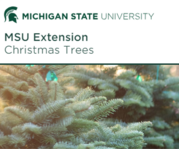 |
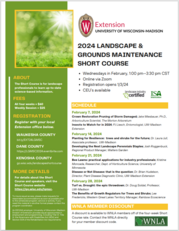 |
|
The Landscape and Grounds Maintenance Short Course, put on by UW-Extension and sponsored in part by the Wisconsin Nursery and Landscape Association (WNLA), is for landscape professionals to learn up-to-date, science-based information to help them increase the economic and environmental sustainability of landscapes they care for, and their business.
Third and fourth sessions: February 21 & 28, 2024
1 - 3:30 p.m. on Zoom
|
|
The Ornamental Nursery Management Webinar Series is also being put on by UW-Extension and WNLA. This free series is for the green industry to learn about pests and diseases to be on the lookout for, and pest and disease trends in Wisconsin.
Second session: March 5, 2024
10 a.m. - 12 p.m. on Zoom
|
|
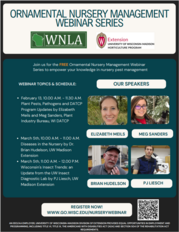 |
 |
|
Create a Beautiful Landscape Free of Invasive Plants Webinar. Horticulturist, author, and speaker Melinda Myers will discuss key invasive plants in Wisconsin, share tips on identification, provide ways to control some of the more common problem plants, and suggest alternative plants for your landscape in this free webinar.
February 28, 2024, 6:30 p.m. on Zoom |
_____________________________________
|
|
|
The Wisconsin Invasive Species Council, a governor-appointed group that advises the DNR and state legislature on invasive species issues, will host a series of virtual information sessions regarding proposed revisions to the state’s Invasive Species Identification, Classification and Control Rule (ch. NR 40, Wis. Adm. Code).
These sessions aim to maintain transparency with the public and request questions and feedback related to the council’s proposed regulations ahead of the official rule-making process.
- Terrestrial Vertebrates, Terrestrial Invertebrates and Plant Disease-Causing Organisms, and Fish and Wildlife Diseases Species assessment groups. Wednesday, Feb. 21, 6 – 7:30 p.m.
- Noncommercial Use Plants and Agronomic Plants Species Assessment Groups. Wednesday, Feb. 28, 6 – 7:30 p.m.
- Aquatic Plants, Aquatic Invertebrates, and Fish a Crayfish Species Assessment Groups. Wednesday, March 13, 6 – 7:30 p.m.
- Herbaceous Ornamental Plants and Woody Ornamental Plants Species Assessment Groups. Wednesday, March 20, 6 – 7:30 p.m.
More information can be found on the Wisconsin Invasive Species Council's webpage, including all slide shows, lists of species, and regulatory recommendations. To register for these events, visit the DNR's meetings and hearings calendar.
_____________________________________
|
|
|
|
|